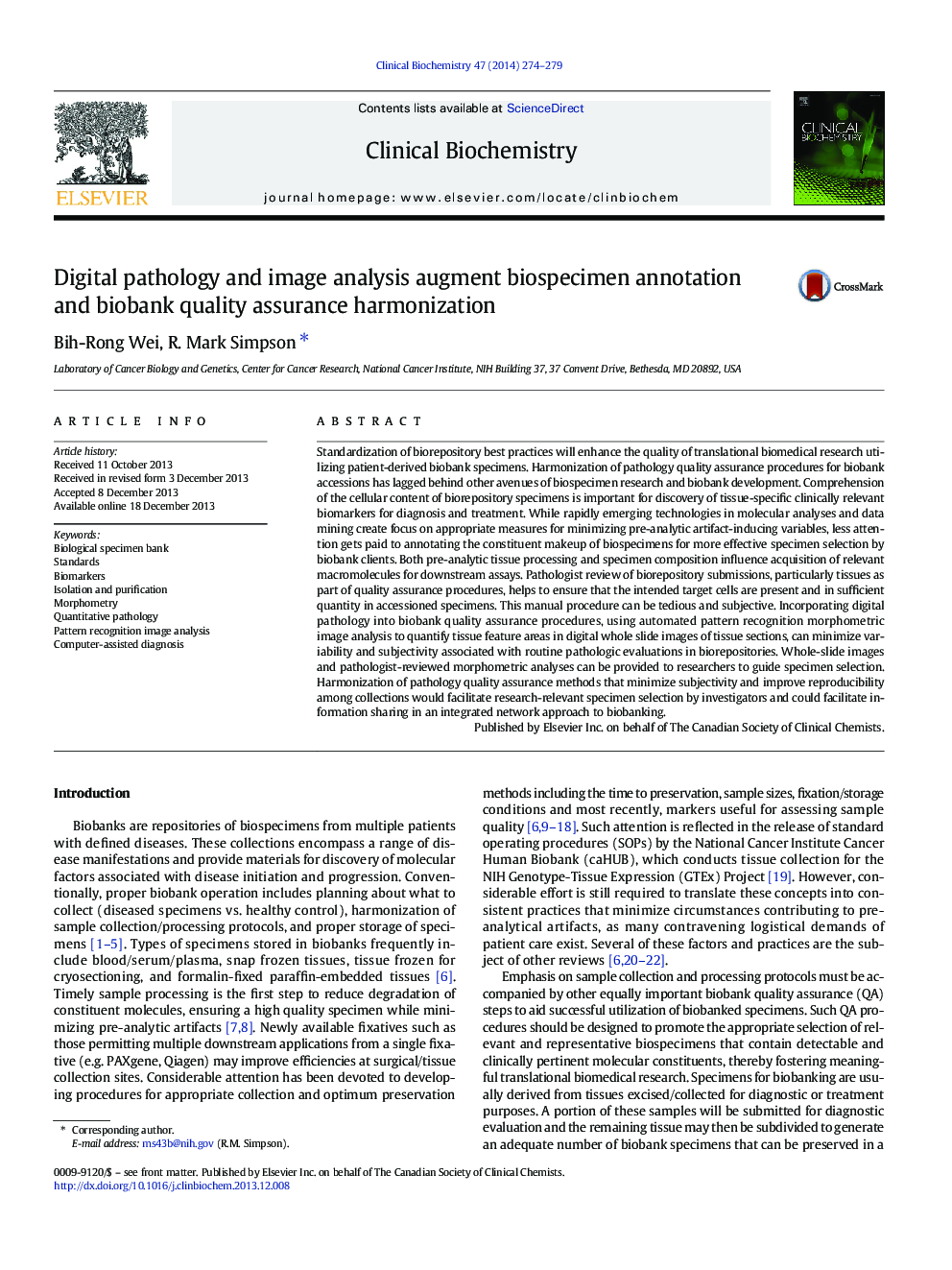| Article ID | Journal | Published Year | Pages | File Type |
|---|---|---|---|---|
| 1968900 | Clinical Biochemistry | 2014 | 6 Pages |
•Importance of pathology quality assurance in biobank management•The impact of tissue components on downstream research findings•How digital pathology and automated image analysis can improve biobanking QA•Improvements include throughput, reproducibility and specimen feature quantitation•Improvements guide more optimal biospecimen selection
Standardization of biorepository best practices will enhance the quality of translational biomedical research utilizing patient-derived biobank specimens. Harmonization of pathology quality assurance procedures for biobank accessions has lagged behind other avenues of biospecimen research and biobank development. Comprehension of the cellular content of biorepository specimens is important for discovery of tissue-specific clinically relevant biomarkers for diagnosis and treatment. While rapidly emerging technologies in molecular analyses and data mining create focus on appropriate measures for minimizing pre-analytic artifact-inducing variables, less attention gets paid to annotating the constituent makeup of biospecimens for more effective specimen selection by biobank clients. Both pre-analytic tissue processing and specimen composition influence acquisition of relevant macromolecules for downstream assays. Pathologist review of biorepository submissions, particularly tissues as part of quality assurance procedures, helps to ensure that the intended target cells are present and in sufficient quantity in accessioned specimens. This manual procedure can be tedious and subjective. Incorporating digital pathology into biobank quality assurance procedures, using automated pattern recognition morphometric image analysis to quantify tissue feature areas in digital whole slide images of tissue sections, can minimize variability and subjectivity associated with routine pathologic evaluations in biorepositories. Whole-slide images and pathologist-reviewed morphometric analyses can be provided to researchers to guide specimen selection. Harmonization of pathology quality assurance methods that minimize subjectivity and improve reproducibility among collections would facilitate research-relevant specimen selection by investigators and could facilitate information sharing in an integrated network approach to biobanking.
